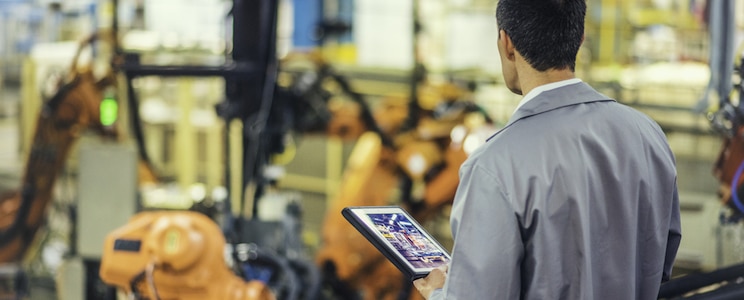
The pressure is on for manufacturers to adopt paperless manufacturing processes.
If you need a reminder of the fragility of manufacturing operations, and the importance of digital transformation, just look back on the past year. Pandemic-related shutdowns have intensified an already volatile market, disrupting supply chains and factory operations. Political winds have up-ended international trade and commerce. Climate events are increasingly a disrupting factor, with the unprecedented West Coast firestorms serving as a stark example.
In addition to these urgent problems, the trend toward remote working has been increasing in recent years, accelerated even further by COVID-19. In fact, Gartner now predicts that by 2024 half of factory work will be done remotely (source). The changes in how we work will be long-lasting. It has become mission-critical to move to paperless manufacturing processes with digital systems that allow us to work collaboratively with far greater efficiency and performance from across different locations. There has never been a more perfect time to start creating a fully paperless manufacturing enterprise – or to accelerate the program you already have in process.
Many Viable Options Now Exist For Paperless Manufacturing
Fortunately, it’s never been easier to adopt paperless manufacturing. Enterprise business and engineering systems such as Enterprise Resource Planning (ERP), Computer-Aided Design (CAD), and Product Lifecycle Management (PLM) applications are already widely in use by manufacturers today. What’s missing, however, is seamless connectivity to the shop floor via digitally integrated data transfer that can keep up with the rate of change now occurring across manufacturing organizations today.
While many have turned to a Manufacturing Execution System (MES) to bridge the gap, a big shortfall still exists. Hybrid approaches that still rely upon manual data entry, paper approval processes, and paper-based regulatory compliance procedures are hampering the efforts of organizations now struggling to keep up with the pace of change that has now become the “new normal.”
What has really become the biggest hurdle has been those organizations still trying to justify the investment in a digital system. A common belief is that the time and cost to deploy are still prohibitive to justify the project. Today, that equation has changed. The cost not to migrate just increased by at least ten-fold.
A Cloudy Future?
Interestingly, COVID-19 might just be the catalyst that accelerates the move to the cloud for applications used to manage manufacturing operations. By taking advantage of solutions that are pre-configured or Commercial-Of-The-Shelf (COTS), the implementation process becomes much easier and faster – and less costly as a direct result.
Pre-configured MES solutions, such as those offered by iBase-t, can be installed in a few months instead of a year or more time that was traditionally associated with monolithic MES applications.
Too Many Benefits to Ignore
Once your system is operational, you can have reporting and control tools that will immediately add value. For example, the speed that you can respond to disruptions will improve dramatically. Work schedules can be modified quickly, including the rerouting of goods, and changing production line assignments on-the-fly based on the latest digital information. Other areas where you can achieve a quick improvement:
- An ability to focus more on supply chain management, helping you to avoid surprises and improve quality while reducing idle inventory
- Access to new levels of real-time operational intelligence; use this knowledge to better anticipate future issues using data mining and artificial intelligence technologies
- A reduction in the cost of quality by relying upon the use of highly calibrated measurements that can be collected at virtually any frequency or level of magnitude, as often as necessary
Attracting the Next Generation of Workers
Millennials now make up 50 percent of the American workforce. By 2025, they will make up 75 percent of the global workforce (source). These workers can be defined as “digitally native,” which comes with a set of expectations on how they work and what kinds of leaders they will become. As Baby Boomers continue to retire, there will be a shift in work culture, which will be accelerated as these digital natives begin to fill key management roles in businesses.
How well will you be able to attract and retain new talent if your production processes still rely upon up-on paper audit trails or management tracking reports? Those businesses that lack a digital infrastructure and the necessary digital workflows now expected by digital natives will struggle to attract new workers and leaders.
In short, digital transformation improves the ability of people at every level to do their jobs better, which makes their work more rewarding, improves overall quality of output, and makes the company more profitable. Manufacturing operations is now characterized by hyper-efficiency and extreme agility. The future is now and doesn’t include paper as part of how operations are run. For those still thinking time exists to consider a future change to digital, that train might have already left the station. Best to start catching up to avoid too painful of a day of reckoning in the future!


